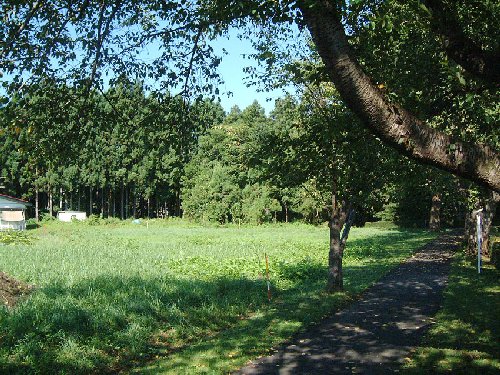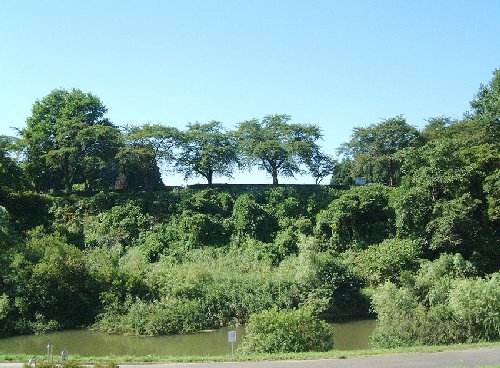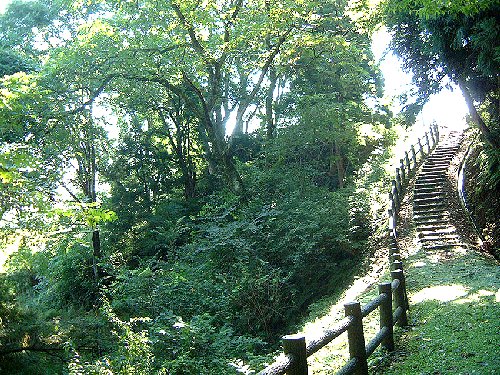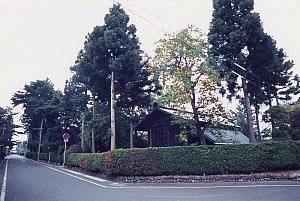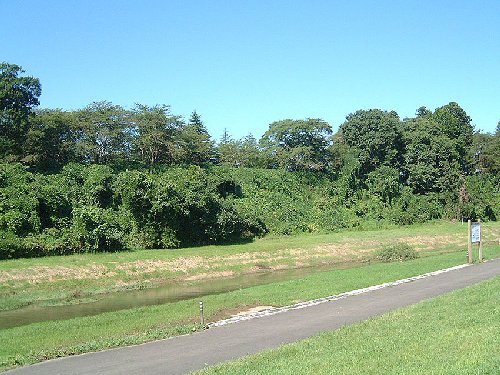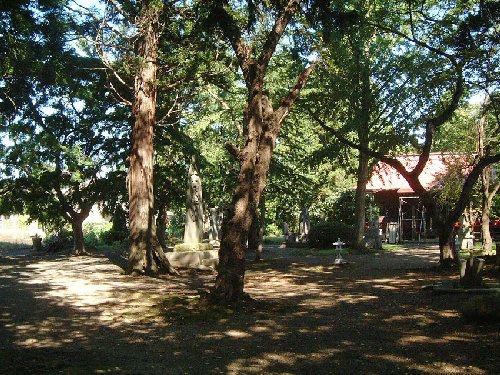place
Kanegasaki-cho Nishine letter white silk thread
Current name
Kanegasaki Castle Ruins, Suwa Park
Terrain and remains
Terrain and ruins It is in the north bank flatland where Kitakami River and Izawa River join, and Yakunai River flows directly below. The elevation is 52 to 54 meters, with less undulations, and it is found in the range of about 600 meters in the northwest-south direction and about 170 meters in the north-south direction. Guo are Marukokan, Ninomaru, Honmaru, Eastkan and others in order from the northwest. Each gull is divided by an open moat 10 to 15 meters wide, and the northwestern part (toward the Yunouchi River) uses natural landscape cliffs. A 50 cm high soil remains in part of the Ninomaru West Side.
history
A new lord of the modern era, the southern part Nobunao Nambu, gave 8,000 stones to Kitahito Ai, who is a reign minister, and made it enter the castle of Torigayasaki as a castle. At this time, Hideai changed the name "Toriyagasaki" to "Hanamaki" and started to maintain the castle town and repair the castle. After Shuai's death, his father, Shosai Nobuchika, succeeded the business but died in 1613. The lord, Nina Tobu, who was the first son of Japan, gave 20,000 stones from the land of Waga and Hianuki, and became the principal of the Hanamaki Castle, which served as a guard for the Sendai border. After Masanao's death, there was no gyoza, and after the Kanei (1624), he set a castle fee and survived until the Meiji Restoration.
Until the end of the Azuchi Momoyama period, Toriyagasaki was the home of Mr. Kananuki. Mr. Kananuki was a great family who was given Kananuki county in Minamoto-Yoritomo during the Kamakura period, and continued until the end of the Middle Ages. It is said to be located in Hanamaki City except for the current southern part of Japan. The family and vassals were placed in each town and the castles were built. Originally based on the Kosegawa-kan (or Segawa-kan), it moved from place to place throughout the county and finally set up a castle in Togayasaki. According to historical sources, it is believed to be after Yonggang 8 years (1436).
In the time of Tensho 18 (1590), when he did not enter Toyoda Hideyoshi's attack against Odawara in the time of Hienuki Hirotada, he forfeited his possession and was exiled Ijo. However, Hirotada, who was also convicted of his possession, wrestled with the former base, Futako Castle, in response to attacking his former home base, Futako Castle, and was said to have succeeded at one point in the resurgence of Togayasaki. There is. After that, it was reported that Hirotada relied on Date Masamune and moved to the area around Hiraizumi, then to the place of the former Tomi Yazawa Mikawa Mamoru.
traffic
About 5 minutes by car from Hanamaki Station

